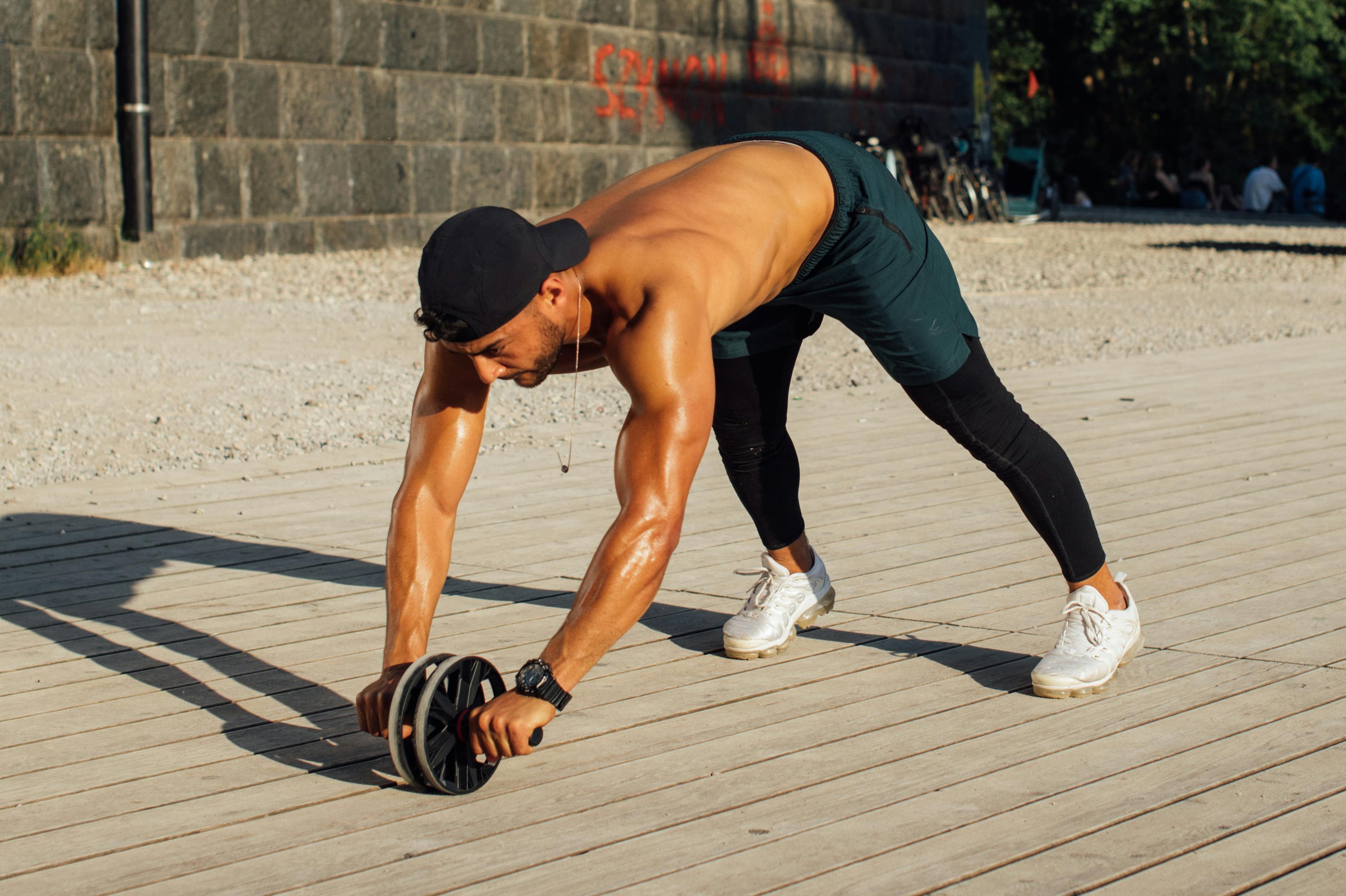There are so many great ab workout options, but ab rollouts are peculiar. They seem fun and require full-body coordination in ways that many other ab exercises do not.
As a result of this, starting out with ab rollouts can be daunting. It can be intimidating when you realize this exercise may be as difficult as it looks, but no need to worry. If you follow the suggestions in this ab rollout guide, you’ll be doing ab rollouts like a pro in no time. Keep reading to learn everything you need to know.
What muscles do ab rollouts target?

Ab rollouts target the following muscle groups:
- Rectus abdominis: Studies show that ab rollouts target the rectus abdominis, the main muscle in front of the abdomen. The rectus abdominis is responsible for a six-pack and helps stabilize the core during the rollout.
- Transverse abdominis: The transverse abdominis is also heavily engaged during ab rollouts. This deep core muscle that wraps around the spine is heavily engaged during ab rollouts to prevent the back from arching.
- Obliques: Both the internal and external obliques, located on the sides of the abdomen, are activated to help maintain stability and control.
- Erector spinae: These muscles run along the spine and are involved in keeping your back straight during the movement.
- Hip flexors: The hip flexor muscles, including the iliopsoas, help stabilize the pelvis as you push out your torso during ab rollouts.
- Shoulders and lats: The deltoids and latissimus dorsi are also engaged, particularly as you extend your arms forward during the rollout.
Benefits of ab rollouts

Enhanced functional fitness and stability
Ab rollouts are highly effective when it comes to developing overall core strength. They not only help you get abs but also engage multiple core muscles, including the rectus abdominis, transverse abdominis, and obliques, leading to a stronger and more stable core.
Better functional fitness
Ab rollouts mimic real-life movements that involve extending and stabilizing the body. By strengthening the core and enhancing stability, this exercise improves functional fitness, which is useful for daily tasks and sports.
Increased flexibility
During the rollout, you stretch your hips, lower back, and abdominal muscles, which can improve flexibility and range of motion in these areas over time.
How to do ab rollouts

Instructions:
- Kneel on the floor with an ab wheel in front of you, holding the handles firmly with both hands.
- Slowly roll the wheel forward, extending your arms and body. As you roll forward, remember to keep your back straight and your core tight. Don’t let your hips drop.
- Use your core muscles to pull the wheel back towards your knees.
Recommended sets and reps: 4 sets of 8 to 15 reps
Things to avoid when doing ab rollouts

Arching your lower back
Arching your lower back will take some of the tension of the exercise away from your core muscles. So, keep your back straight throughout each set, even towards the end when it becomes difficult to maintain good form.
Going too far
The ab rollout is a fairly difficult exercise, and depending on your experience, your range of motion may be limited. If you’re new to the exercise, you don’t want to roll too far because your body may not yet be accustomed to that range of motion. A good time to stop rolling out during a rep would be when you can’t stop your lower back from bending.
At that point, you should come back and do another rep. As you continue with the exercise, you will be able to roll farther out because you’ll slowly build strength and mobility with experience.
Compensating with your arms and shoulders
The International Sports Sciences Association (ISSA) advises you not to use your arms and shoulders excessively during the ab rollouts. While you can’t avoid incorporating the muscles in these areas, remember not to allow them to take the tension away from the abs.
Using momentum
While performing the ab rollout, move slowly and deliberately. Don’t rush the motion.
Letting your hips drop
Ensure that your body is in an almost straight line from your head to your knees (or toes if you’re doing a more difficult variation). Allowing your hips to drop is just like arching your lower back in the sense that it takes away some tension from the core muscles and makes the exercise less effective.
Holding your breath
Don’t hold your breath throughout a set of ab rollouts. Instead, breathe steadily throughout the exercise.
Frequently asked questions

Are ab wheel rollouts effective?
Ab wheel rollouts task the different core muscles, including the rectus abdominis, obliques, and erectors. They are effective not only for getting a six-pack but also for building a strong core. Ab wheel rollouts should have their place in any good ab workout.
What are the negatives of the ab roller?
Ab rollers are used for ab rollouts, an effective abdominal exercise. However, using the ab rollers may require a bit of skill and getting used to it. So, if you’re just starting out with this exercise, focus on learning and mastering the form. Once you’re past that, it’s a pretty enjoyable and effective exercise.
Does ab roller burn belly fat?
While using the ab roller to perform ab rollouts can help burn calories and build well-developed abs, they cannot specifically burn belly fat. You can’t reduce fat in a single spot, even by training the muscles in that spot.
But by consistently performing resistance training exercises like ab rollouts, eating a healthy diet, and engaging in cardiovascular activities, you can burn fat in different areas of the body, including the belly.




